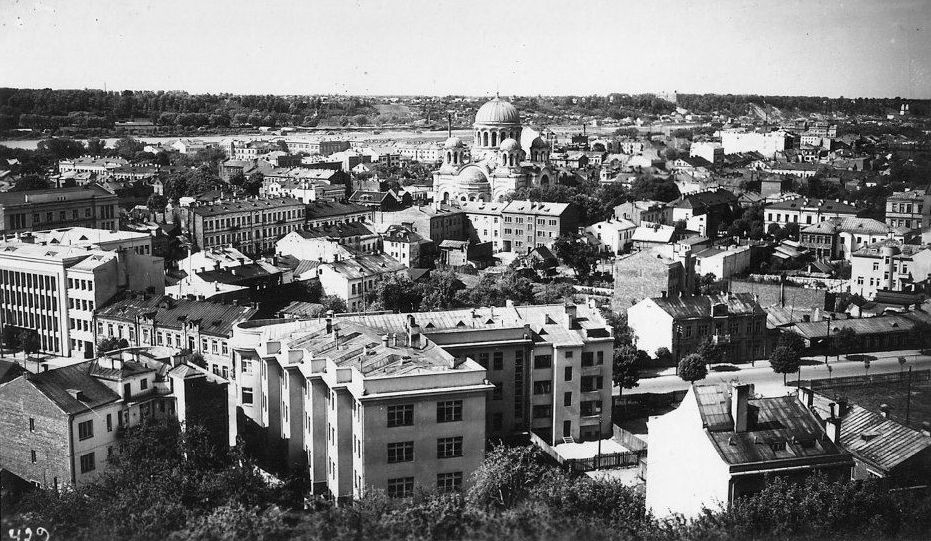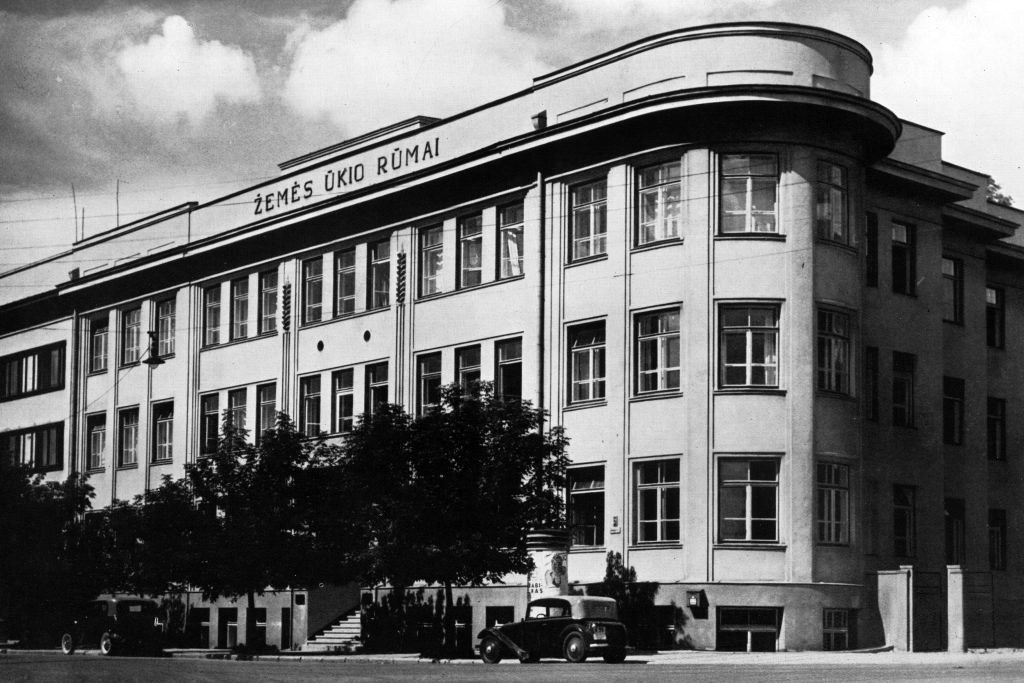Address: K. Donelaičio g. 2, Kaunas
Architect K. Reisonas
Built in 1931
Routes: The New Town of Kaunas


Address: K. Donelaičio g. 2, Kaunas
Architect K. Reisonas
Built in 1931
Routes: The New Town of Kaunas
The Chamber of Agriculture of the Republic of Lithuania is one of the oldest European farmers’ organizations. It was established in 1926. Its development took place during one of the most difficult periods for our country: it was necessary to immediately start rebuilding the country’s economy destroyed by war and occupation. The draft of the Chamber of Agriculture was submitted to the Seimas in 1924. According to this document, there was a dual representation of farmers: direct and through farmers’ organizations.
In 1925, a year after the project was submitted, the Chamber of Agriculture Act was passed. After its entry into force, by the order of the Minister of Agriculture, the opening day of the Chamber of Agriculture was set: May 27th 1926. One of the essential missions of the organization was to represent all Lithuanian farmers, defend their interests in state authorities and assist both the Government in solving various agricultural issues and the farmers themselves seeking progress in farming by modernizing agricultural production.

A view from the Parodos hill, 1940s. A postcard.
In the list of works of the pre-war Chamber of Agriculture: organization of agricultural production, reorganization of livestock farms, construction matters. The Chamber’s concern was also cooperation. An important work in independent Lithuania, with the active participation of the Chamber of Agriculture, was the establishment of the cooperative union “Linas” in 1939. At that time, cooperatives had 8 percent in their hands. Lithuanian flax trade and export.
The agricultural reform carried out under Soviet occupation was only an illusion of the creation of free farmers’ farms. Even in the run-up to the agricultural reform, it was already clear that there was a need to move from individual farms to a system of collective farms and state farms. Understandably, the Chamber of Agriculture was unnecessary for such a system. 1940 in the autumn the Chamber of Agriculture was liquidated.
In 1991, after the restoration of Lithuania’s independence, the Chamber of Agriculture was also restored. In two decades, they have become the most important and influential organization of farmers ’self-government. Contributed to the development of modern competitive Lithuanian agriculture. Today, farmers kindly call the organization “Rural Parliament”. It represents the interests of farmers not only nationally but also internationally. The main goal of the international representation of the Chamber of Agriculture is to represent the interests of Lithuanian farmers at the European Union level, to maintain business relations with various European farmers and rural organizations and institutions, to seek effective dialogue with them in agricultural and rural development policy decisions, to promote farmers’ initiatives and activities that benefit the state by forming a positive public attitude towards agriculture and the countryside.
The Chamber of Agriculture helps the rural population to apply the latest scientific achievements, implement innovations, organize joint projects with Lithuanian and foreign partners. Cooperation agreements have been signed with various scientific, educational, state and public organizations.

A view to the building from Vytautas avenue. 1940s. A postcard.
In 1929 after allocating a plot of land at the intersection of K. Donelaičio and Parodos streets, Karolis Reisonas, a well-known interwar architect, was appointed to design the building of the Chamber of Agriculture. Before that, he already contributed to the development of Lithuanian agriculture by publishing a textbook on the design of agricultural objects for farmers and farms. In 1930 brothers D. and G. Ilgovskiai, the construction contractors, were officially appointed in the competition and the architect K. Reisonas took up the position of the construction manager of the building. Although the facade of the building had not yet been completed in 1931, the offices of the Chamber of Agriculture and their subdivisions had already moved into the new premises. The end of construction work was marked in November of the same year.

A general view of the building, 1940s. Source: Lietuvos Respublikos Žemės ūkio rūmų svetainė.
The price of the building was a large sum of money at that time – half a million litas. An important detail that forms a common and harmonious composition became the adjacent residential house with a rounded corner. Both gracefully fitted the foot of the Parodos (Exhibition) Hill. The building of the Chamber of Agriculture was enlivened at the edge of the building facing the hill, which is also curved and accompanied by an imitation of the “stepped facade”. Thus both buildings became the urban gateway to the Parodos Hill. Lithuanian agricultural and industrial exhibitions were organized here. The main facade of the Chamber of Agriculture faces K. Donelaičio Street, it is diversified by a small balcony hanging above the main entrance. It is recessed, sinking the entire ensemble of the main stairs. The purpose of the building is emphasized by easily recognizable and associated decorative details – grain bells, which “grows” vertically to the third floor of the building.
Text by Dovydas Buivys
Photos by L. Mykolaitis, 2017 and Ž. Rinkšelis, 2019.